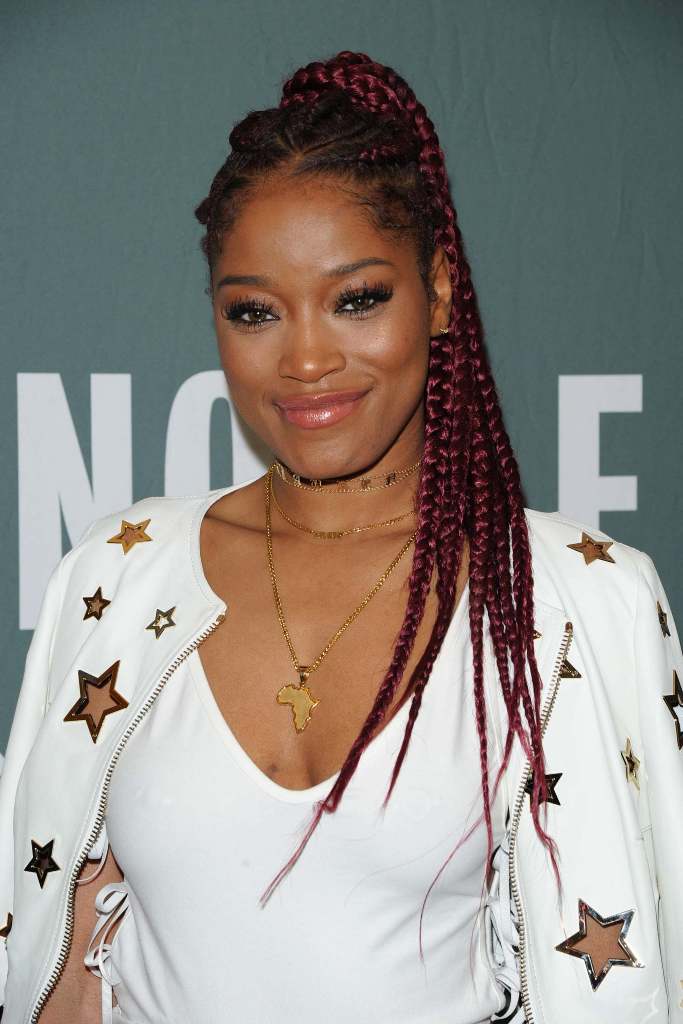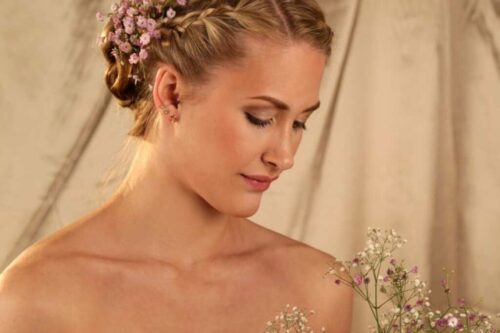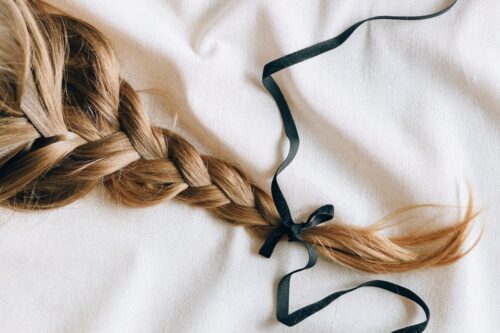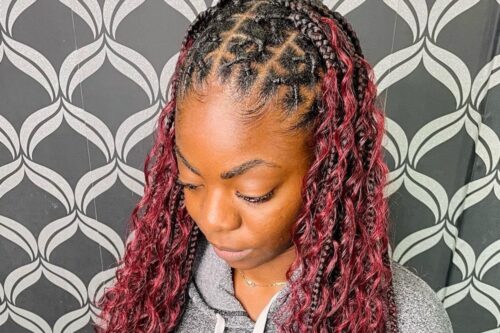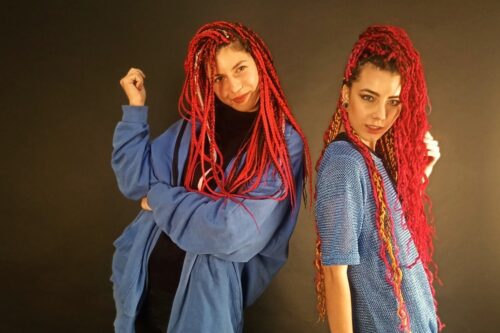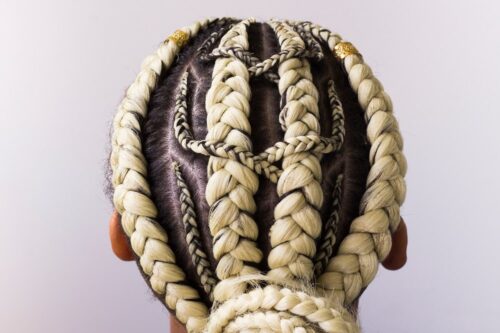After the box braids, Ghana braids are the most common African hairstyle. And just like the former, the latter also has deeply rooted African cultures and traditions within them. As we now know them today, Ghana braids also went by the names of cornrows, banana braids, etc. Although these are traditional African hairstyles, they are still growing increasingly popular every day, within and outside their community. In Africa, hairstyles distinguish between the tribes, religion, wealth, and marital status. In some countries, braids were the form of communication. For braids, women usually have thick hairs, and they use tree barks and oils to uphold the hairstyle. In Africa, the hairstyle was considered as a significant and symbolic part of the different communities. Members of royalty often wear elaborate hairstyle as a symbol of their stature. Hair was also seen as the symbol of fertility; long thick hair symbolizes the ability to bear healthy daughters. Different hairstyle pattern was made during weddings and social ceremonies and for war preparations. The members of the tribes were easily identified by their hairstyle patterns.
They offer solid protection to your hair for long periods at a go, and this is extremely vital, considering the structure of most African hairstyles. Curly and unruly hair can be quite difficult to manage, and too much time and effort will be gone for maintenance daily. But with such protective hairstyles, you can just braid your hair up and not worry about it for the next couple of weeks or even longer.
Ghana braids are a very versatile hairstyle, and you can style them in more than 100 different ways. Accessories, colorful highlights, and streaks, beads that adorn your hair. All these are some of the most popular versions of the Ghana braid that we usually see around. Some other popular styles include the zig-zag cornrows style, mix of thick and thin braids style, multi-colored braids, cornrows with thick bun style, huge chunky braids, and smaller braids as well. You can switch between these every time you get these braids and not limit yourself to only one style. Here, we are going to look at how we’ll do the normal Ghana braids style.
History & Origin
Ghana braids are a form of cornrows. It is originated from Africa date back to 500 BC, where they were seen as hieroglyphs and even as a sphinx. This style reappeared when enslaved Africans were taken across the middle passage as a way of expressing identity. They traditionally denote identity, familial affiliation, marital status, and religion.
Ghana braids are straight back cornrows that utilize the feed-in braid method’s idea and make them longer and stronger. Ghana braid is a traditional hairstyle; however, it is fed with the hair extension. Hair is fed at the top of the braid as opposed to underneath the braid. It appears like a ring from the top of the hair. The thickness of the braids varies. You can do this braid with or without extension hair. You can use any kind of extension here.
There are many different forms of Ghana braids which you can choose from. There is a whirlpool design where your braids can be done in a swirled fashion.
Ghana braids are a protective style and can be preserved by wearing a scarf at night and spraying braid spray or root stimulator to keep your hair moisturized. Ghana braids can be done on any length, size, color. Many black women decorate their Ghana braids with wooden beads, yarn, and metal rings to give extra flare. Ghana braids are usually worn in straight back hairstyles, but you can for ponytail or bun. You cannot create different hairstyles with Ghana braid as they don’t provide much free-flowing movability. They are short and protective styles.
Supply You’ll Need To Make Ghana Braids
- Comb (rat tail comb is preferred)
- Hair Extensions
- Hairbands or hair ties (plastic/elastic)
Steps To Do A Ghana Braid
- Just like before any protective hairstyle procedure, wash and dry your hair and make sure you use shampoo and conditioner while washing. Once your hair has dried, detangle it completely to avoid any knots and stray hair.
- Next, you should part your hair in vertical sections. Divide the hair into rows of equal thickness from the front to the back. The end of a rat tail comb is a handy tool that will separate each section of hair neatly and perfectly straight, unlike other comb ends that may not always deliver results in the same manner
- Now, select one row of hair you want to begin with and further divide it into three sections. And then start braiding this to create a stitch, just as you would do a normal braid; take the left section and overlap it over the middle section, then take the right section and overlap it over the middle section again, now the left section.
- As you keep braiding, for each stitch, add a small section of hair from the row underneath till you reach the neck. This is to keep your hair attached to the head.
- As you reach the end of the neck, you won’t have further hair to add to it, so you can just continue braiding it in the normal way and then tie it up with a hair tie or hairband. Do the same process for the rest of the rows until you cover your whole head is finished. And with that, your Ghana braids are good to go.
Braids and cornrows are very similar, and the only difference is that in cornrows, the hair will be pulled from each underneath section to the current section; therefore, your hair will be completely attached to the scalp till the length of the nape. And in braids, the hair will not be attached like this.
Ghana braids are easier than box braids and will only take 2-3 hours to finish. If you are a beginner, however, the duration may exceed up to 4-7 hours.
Protecting your braids is vital to keep them fresh and smooth for longer durations. At night, your hair tends to break when you lie on the pillow or move around during sleep. So the best way to protect your Ghana braids is by wearing a silk scarf or covering your hair in a silk or satin material cloth.

